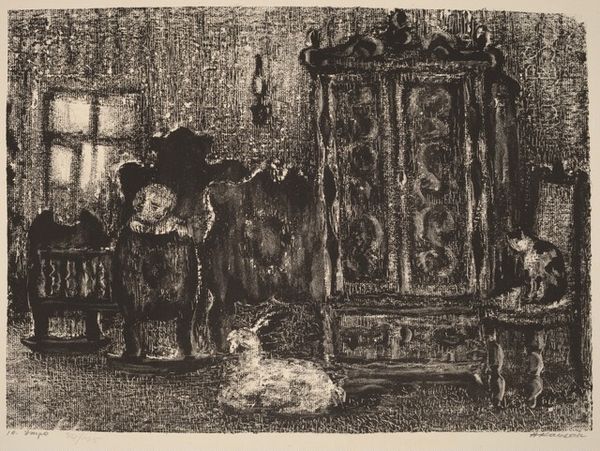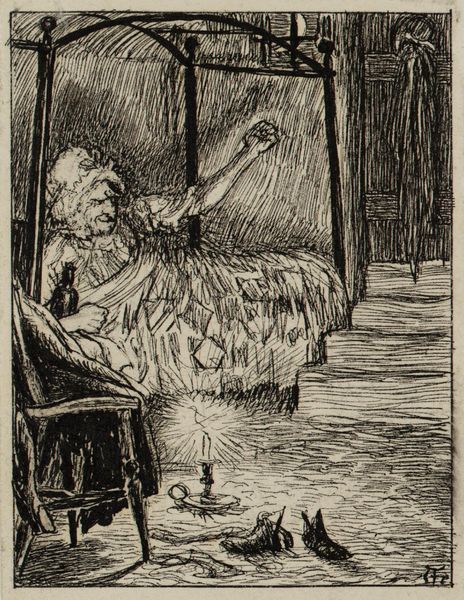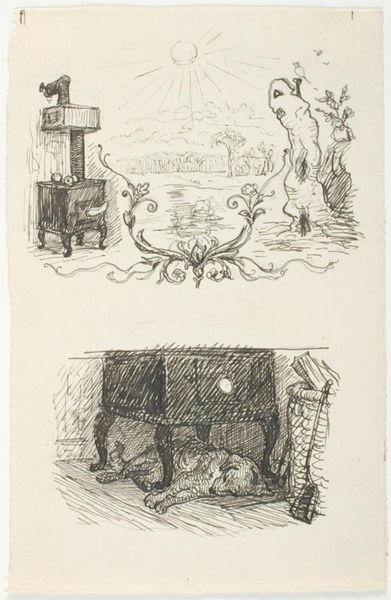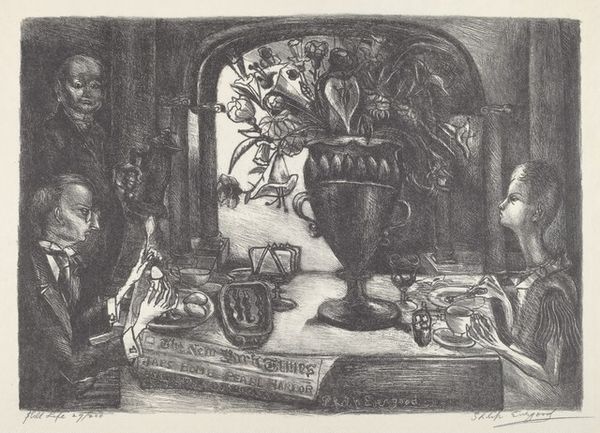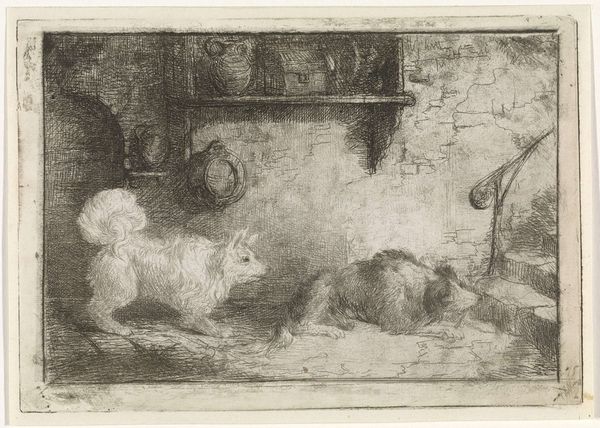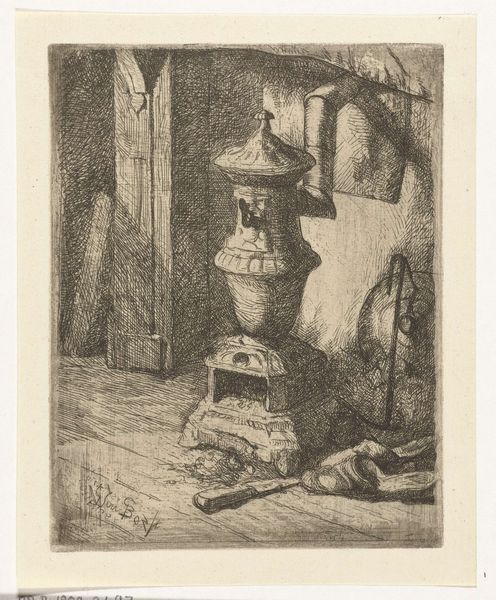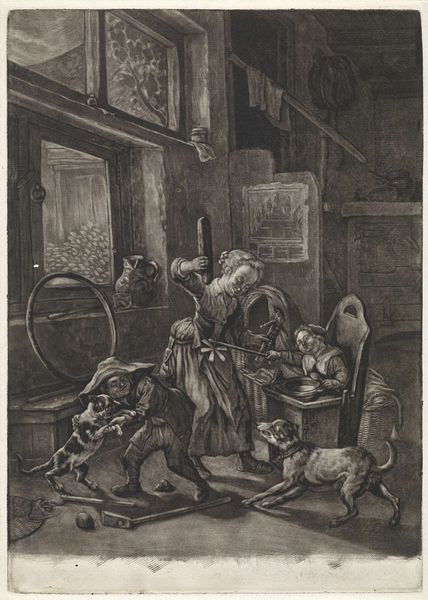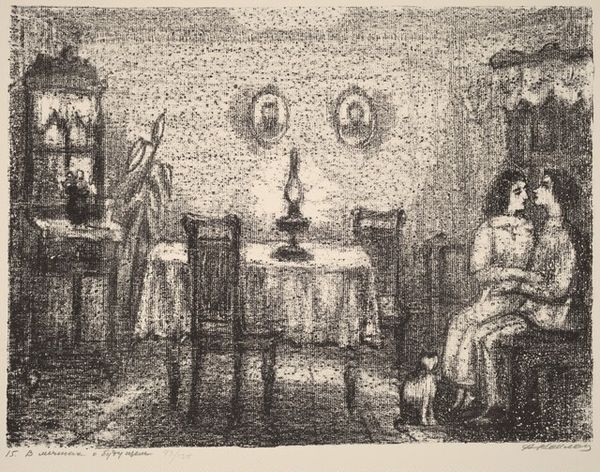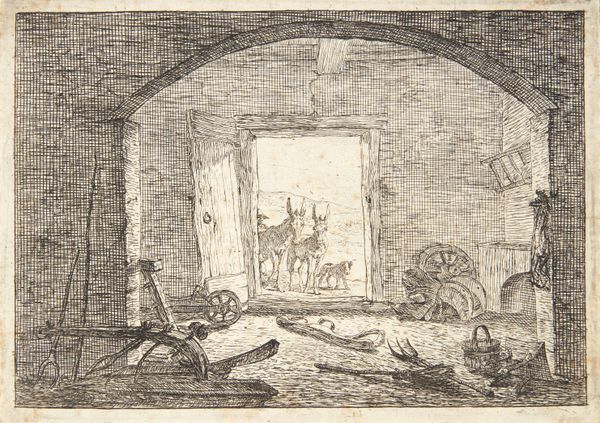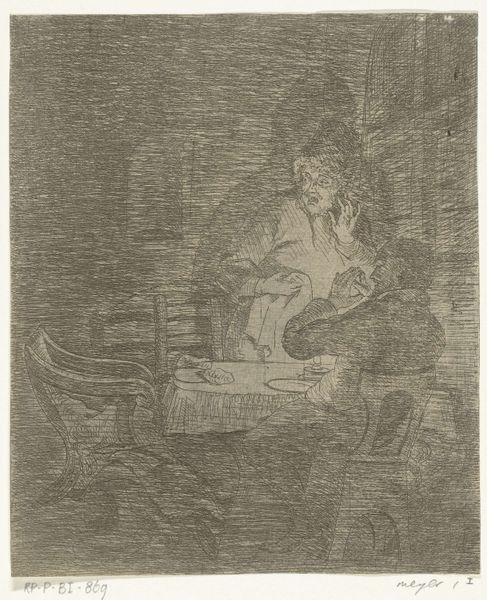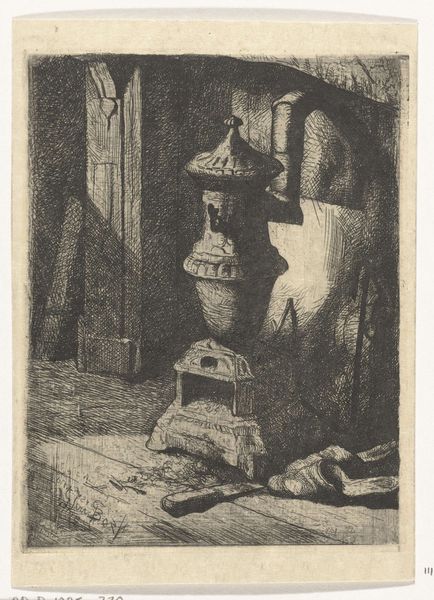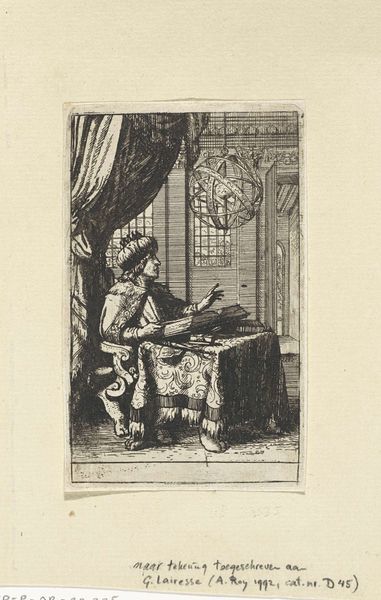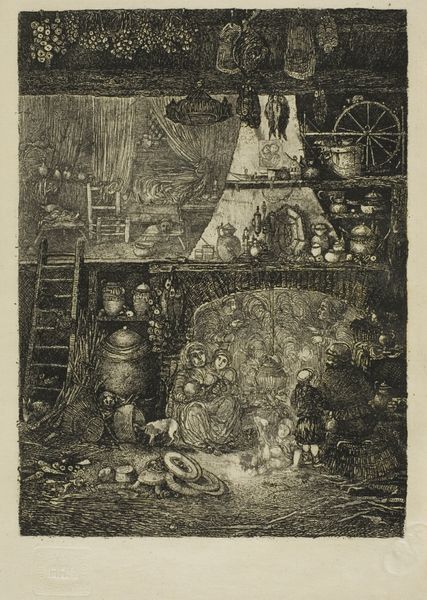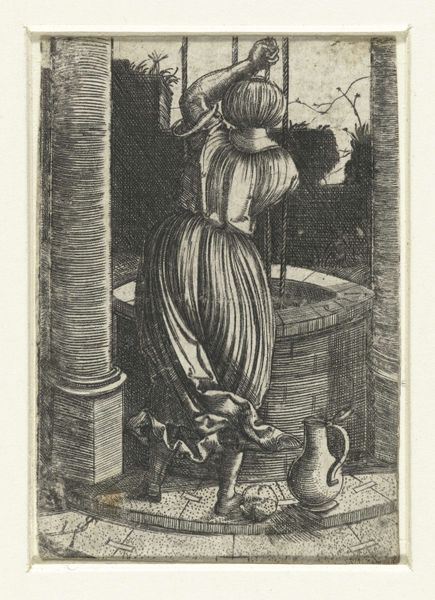
drawing, print, etching, ink
#
portrait
#
drawing
#
narrative-art
#
pen drawing
# print
#
etching
#
figuration
#
ink
#
pen-ink sketch
Copyright: National Gallery of Art: CC0 1.0
Curator: This is Anatoli Kaplan's etching, "A Child by a Cradle," created between 1957 and 1961. The subject seems fairly straightforward at first glance. Editor: My immediate impression is somber. The dense inkwork creates a cloistered, almost oppressive atmosphere. There’s a distinct loneliness emanating from that small figure. Curator: The hatching and cross-hatching used extensively throughout the piece are typical of Kaplan's printmaking, giving it an almost palpable texture. Looking closer, you can see how the lines are built up to define not just the figures, but also the domestic objects surrounding the child. It's the material reality of the objects that lends to a story. Editor: And what story is that, Curator? To me, the interior becomes a symbol. Look at the rigid lines of the furniture and the heavy darkness used overall. The scene might point to the repressive post-war environment and anxieties about the next generation’s future in a totalitarian world. Even that cat is a lonely witness. Curator: I am fascinated by the printing process. Kaplan wasn't simply transferring an image. Instead, he uses ink and paper, the basic tools, to highlight themes about domesticity, and, more significantly, about labor and care. A great amount of attention has been devoted to create the image; the number of prints and reprints affects perception. It transforms into an artifact, both aesthetic and utilitarian. Editor: I find it quite moving. This is not just an aesthetic object, it's a record of social experience and, frankly, a rather painful one at that. I keep thinking about how the act of observing can imply themes of innocence, the passage of time, memory, all made physical by this image. Curator: Thinking about his wider body of work, it is difficult not to think about his dedication to capturing everyday experiences under extraordinary circumstances and to understanding art making within material confines. Editor: Well, that just might change how I consider material choices within artistic narratives. The dialogue makes "A Child by a Cradle" more evocative than at first viewing, an image about time, and the quiet revolution of domestic life.
Comments
No comments
Be the first to comment and join the conversation on the ultimate creative platform.
